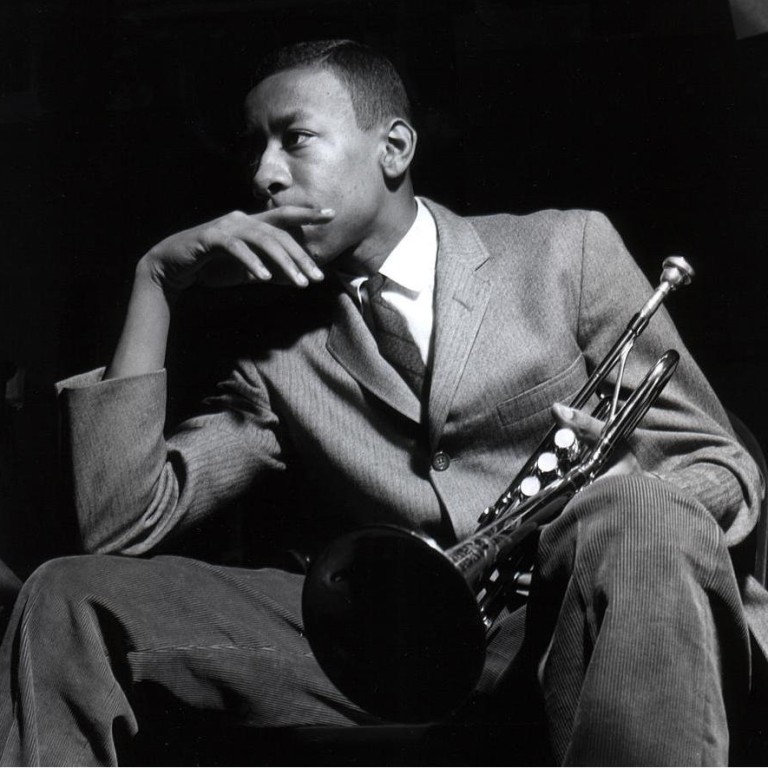
The best of jazz trumpeter Lee Morgan, in a new 6-CD set
On one of his later birthdays, jazz pianist Eubie Blake, who died in 1983 aged 96, is said to have remarked: "If I'd known I was going to live this long, I would have taken better care of myself."
It's a sad fact that many fine jazz musicians have led reckless lives. Drugs, alcohol and accidents related to life on the road have sent many to early graves. Several have also been murdered, among them guitarist Lenny Breau, pianists Jaki Byard and Pinetop Smith, saxophonists King Curtis and Frank Mitchell, vocalist Eddie Jefferson and bassist Jaco Pastorius. Saxophonist Wardell Gray probably also was, and trumpeter Chet Baker might have been.
Trumpeter Lee Morgan is one of the best-known cases. His luck ran out in 1972 at the - under the circumstances unfortunately named - Slug's Saloon jazz club in New York City, where his girlfriend shot him with his own gun. Morgan, a large chunk of whose work has just been reissued on the Enlightenment label under the title , was among the most gifted trumpeters of a generation that had no shortage of them. His contemporaries included Donald Byrd, Booker Little and Freddie Hubbard.
Dizzy Gillespie gave Morgan his breakthrough gig when he joined the Dizzy Gillespie Big Band aged 18. He graduated to leading his own groups and membership in Art Blakey's Jazz Messengers.
Morgan was a key contributor to the distinctive sound of the Blue Note label in its heyday. He recorded prolifically for it both as a leader and as a sideman, and with it scored his biggest hit, , in 1964. That album is an acknowledged classic, and its bluesy title track, which Morgan composed during the recording sessions, has become a standard. It is one of the defining recordings of the hard bop school.
Unfortunately, Morgan's career as a solo artist after seemed mostly devoted to trying to make lightning strike twice with soundalikes, but his earlier work showed a much broader talent. This six-CD set comprises 12 LP albums, seven originally on Blue Note, three on Vee-Jay, and one each on Savoy and Jazzland Records.
was a strong debut album, recorded and released in 1956, with Horace Silver on the piano.
was made with the Hank Mobley Quintet, and both Mobley and Silver feature on . consists entirely of compositions by tenor saxophonist Benny Golson, who also played on the tracks. , Morgan's third album release of 1957, features an all-star horn section of Morgan, Curtis Fuller on trombone and George Coleman on tenor and alto saxophones.
For 1958's Morgan reverted to a quintet. And for , also released in 1958, he opted for the support of a trio.
On 1960's , Clifford Jordan played the tenor saxophone, Blakey was on drums, Wynton Kelly on piano and Paul Chambers plays bass. On that album and the follow-up, , Morgan began to emerge as a composer, as well as being a fine interpreter of standards and compositions by his contemporaries. Jordan and Blakey returned for 1960's .
was originally credited to the group of the same name, but has since been reissued, and credited in different editions to both Morgan and Wayne Shorter.
The final album, , was the last Morgan made as a leader before the career-redefining .
Meanwhile, tonight is the second and final chance to see Cassandra Wilson perform her Billie Holiday tribute at the Hong Kong Cultural Centre. Multilingual US cabaret jazz band Pink Martini will play the same venue on Saturday and next Sunday.
Three classic albums featuring Lee Morgan not included in .
- (1957, Blue Note): John Coltrane's sole recording as a leader for Blue Note, and allegedly his favourite of his albums. is arguably the most accessible while still containing substantial music. Along with Coltrane and Morgan, the album features Curtis Fuller on trombone, Paul Chambers on bass, Philly Joe Jones on drums and Kenny Drew on piano.
- (1958, Blue Note): the title track of this album by Art Blakey and The Jazz Messengers is possibly the biggest Blue Note hit with which Morgan is associated before . It features one of the band's strongest line-ups, including pianist Bobby Timmons who wrote the tune, and Benny Golson on tenor saxophone.
- (1966, Blue Note): recorded shortly after , but not released for a couple of years, this album is different in mood but in many ways just as rewarding. The stellar line-up, apart from Morgan, comprises Wayne Shorter on tenor sax and Herbie Hancock on piano.

